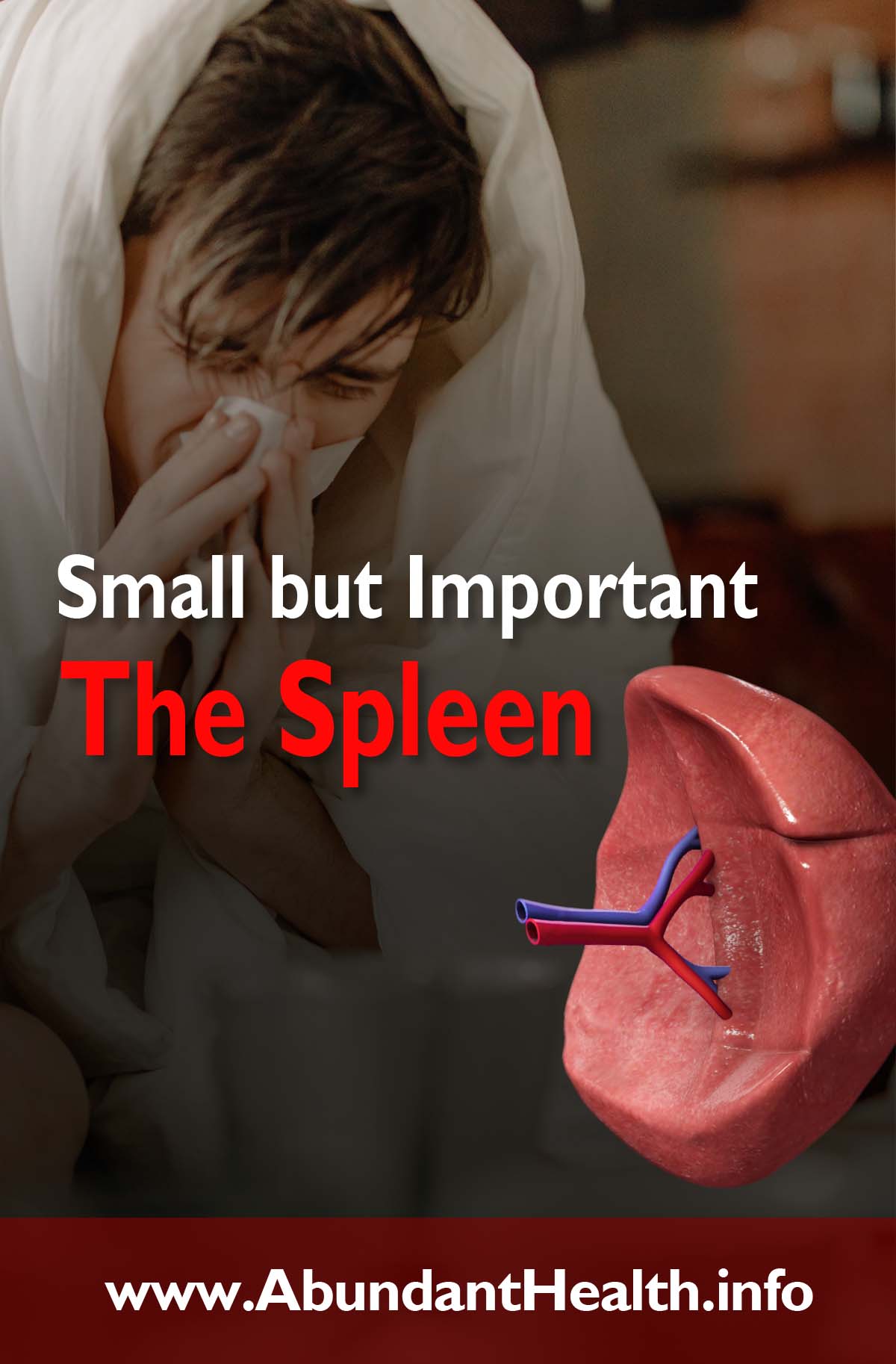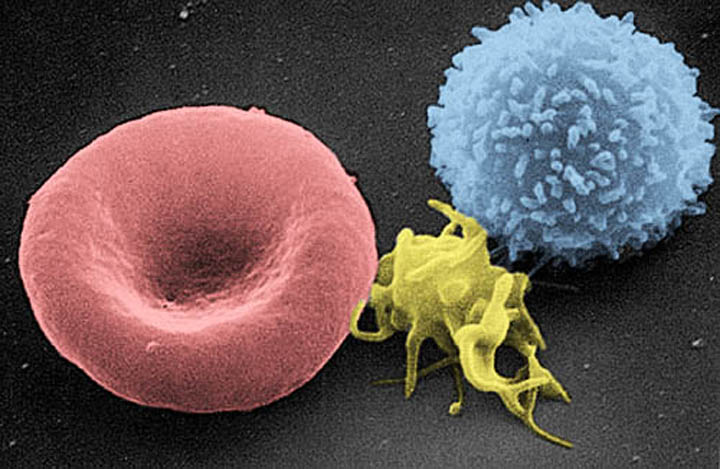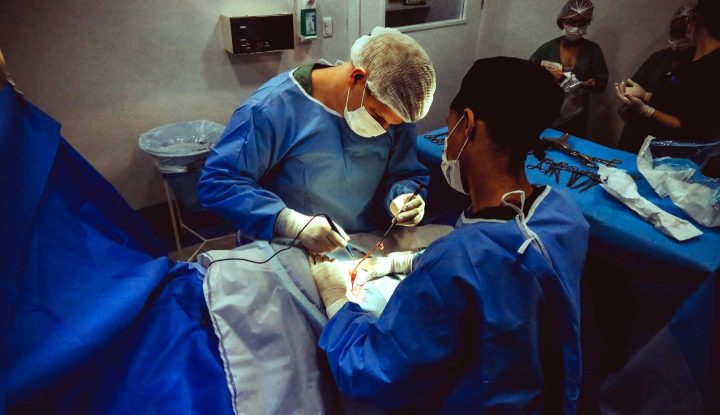If everything is going well in the bloodstream, it is not even palpable. The doctor can only palpate it when it is enlarged. It has very important tasks in the defense against diseases and in the red blood cell turnover. But if necessary, you can live without it.

The spleen is a soft, small, spongy organ just 3 inch wide and 4 inch long (7×11 cm). It is located in the left upper abdomen at about the level of the tenth rib. It is limited by the stomach, the left bend of the colon and the left kidney. A healthy spleen weighs between 5 to 7 ounces (150 – 200 grams) and is only palpable when it swells. Then it can weigh up to 4 pounds (2 kg).
If you cut through the spleen, you can see a framework of connective tissue and whitish and reddish areas. The white pulp is made up of the lymphoid follicles and the periarterial lymphatic sheaths. The color of the red pulp is due to the presence of the many red blood cells in the spleen capillaries. About a quarter of the tissue consists of white pulp and three quarters of red pulp.
Two Important Tasks
The spleen is one of the lymphatic organs, so it plays an important role in defense against disease and thus has a similar task to the lymph nodes. The individual lymph nodes only filter the lymph from a certain region of the body. But the spleen is responsible for the entire bloodstream. With a local infection, individual lymph nodes become inflamed. However, if many pathogens are washed into the bloodstream, the spleen swells, a sign that it has to work harder. The white pulp takes on this task of defense against disease. There are around 20 times as many lymphocytes in the spleen as in all lymph nodes combined. Lymphocytes are small, white blood cells that play a major role in the specific immunity.

The red pulp has completely different tasks. It appears so red because there are so many red blood cells swimming around in it. The aged corpuscles are broken down in the spleen. The red blood cells have to squeeze through a tight network. Young blood cells can deform themselves very well and easily squeeze through the narrow blood vessels. Old blood cells can no longer be deformed as easily. They get stuck in the tight network and are broken down by the phagocytes. During this cell turnover of the blood, the red blood pigment hemoglobin is released.
The body uses its breakdown products very sparingly and recycles a lot, including hemoglobin. It is converted into bile pigments and released into the bile by the liver. This is why jaundice can occur with an increased breakdown of blood cells. Neonatal jaundice is particularly well known.
The spleen also has other functions. In babies, it makes red blood cells. In adults, this task is performed by the bone marrow. It also stores platelets, which are released to help blood clot when bleeding. But it also recognizes small thrombi and breaks them down. It also produces some of the macrophages, the phagocytes that flow around and digest foreign bodies in the blood and play an important role in the immune system.
Anthrax
Anthrax is a zoonosis, a disease that affects animals and can be transmitted to humans, but not from person to person. It occurs mainly in people who deal with animals a lot, such as farmers or butchers. In our latitudes it is rare today, but it is more common in warm regions such as South Africa. It is a reportable infectious disease. It is transmitted by the Bacillus anthracis, hence the name anthrax. The bacilli form spores. In this inactive form, they are very stable against heat, dehydration, radiation and disinfectants. They can remain in a pasture for a long time before they are ingested by animals.

The disease can appear as skin, lung, or intestinal anthrax. The spleen is enlarged, darkly colored and looks like it has been burned. The symptoms of the disease are like those of an infection. If it is recognized quickly, it is easy to treat. If treatment is delayed, it is difficult. There may be a high fever, lung failure and shock.
Anthrax was picked up by the media as a biological weapon. A few years ago, a lot of unrest was created when some real and some ineffective white powder was sent by post. There is no need to be afraid of this biological weapon. Though it is possible to use it in a very targeted way, it involves some complicated procedures. You have to pack the spores correctly and spray them in the right size so that they can be picked up.
Spleen Removal
The spleen is not essential for life. You can live without it. In adults, the lymphatic function can be taken over by the lymph nodes. The liver steps in to break down blood. Even so, the spleen should not be removed lightly. For example the risk of blood poisoning is much greater without a spleen. Immediately after removal of the spleen, patients are also much more at risk of developing pneumococcal pneumonia. It takes time for other organs to take over the task of the spleen and protect the body from disease.
An important reason for removal is, for example, a capsule tear. The spleen is surrounded by a capsule that is very well supplied with blood. In the event of bruises, it easily bursts. There is profuse bleeding. In the past, the spleen was simply removed in such cases. Today a surgeon may try to glue the crack because the spleen is such an important organ in defense against disease. During operations, the surgeon has to work very carefully around the spleen. If he injures the capsule, the bleeding is hard to be stopped.

In the case of increased blood breakdown, special forms of anemia or leukemia and malignant tumors, it often has to be removed.
After the spleen has been removed, the patient is monitored very closely in the hospital. The blood count is continuously monitored. In this phase no inflammation or any other disease is permitted, because an important part of the immune system was removed. Even after the hospital stay, the immune system must be strengthened through a vitamin-rich diet and plenty of exercise in the fresh air.
The spleen, however small the organ, has an important function. It can be replaced in an emergency, as we have seen. But as long as we have it, we want to protect and preserve it through a sensible, immune-boosting lifestyle. This not only benefits our physical health, but also our spirit and soul. We can think better and communicate better with others and with our Creator.
We have a special opportunity just for you. If you want to receive practical and up to date advice on how to implement an immunity-boosting lifestyle, simply join the Coronavirus Immunity Challenge and prepare yourself to face the pandemic with a bullet-proof immune system.
Coronavirus Immunity Challenge


Esther Neumann studied Nutrition at the University of Vienna. Since then she served as an author for the health magazine “Leben und Gesundheit” and conducted health lectures in various locations of Austria.
Leave a Reply